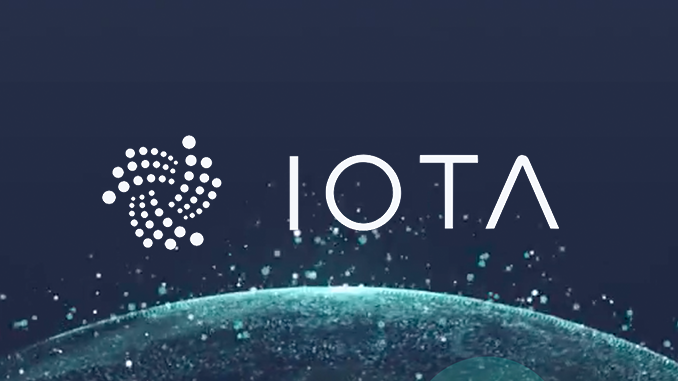
IOTA 2.0 is the big goal to make the network and the crypto currency for the Internet of Things future-proof. In the discussion about it, technical terms are used, which we will explain here briefly. In addition there is an outlook on the timetable.
IOTA started 2015 and wants to become the standard with its network and its own crypto currency MIOTA in the Internet of Things (IoT). Since the launch, the existence of a central point in particular has proven to be a weak point of the concept, because actually all other block chains and crypto currencies function decentrally and are therefore immune to external influences. Therefore, the IOTA Foundation has been working for years under the project name Coordicide to abolish the central coordinator and wants to achieve this goal in 2021 with IOTA 2.0. Various technical terms are used to give a good overview of what IOTA 2.0 is supposed to be about. We list them here with short explanations:
Tangle: In normal blockchains block by block is lined up and each of these new data blocks contains the confirmation of new transactions. IOTA has taken a different approach so far and therefore calls its network Tangle or also Tanglenet. Here, network participants always check at least two foreign transactions in the course of a transaction and release them if no irregularities are detected. Thus, the Tangle is free of fees, but not really decentralized.
Coordinator: The central point in the Tanglenet, often written in German, is a node, which is operated by the IOTA Foundation. It is the last instance for transactions and can stop them arbitrarily. This has proved to be a stroke of luck in the case of the serious security hole in the official IOTA Trinity Wallet – an attack by cyber criminals could thus be largely fended off. But the crypto community and also commercial users of IOTA are a thorn in the side of the coordinator, because they consider the central principle to be a weak point of the whole concept.
GoShimmer: A software module for IOTA is being developed under this name, which should achieve consensus on the validity of transactions without the central coordinator.
Mana: With this mechanism, IOTA wants to use to classify the credibility of nodes when reaching consensus on the validation of transactions. Each transaction should also be accompanied by mana tokens that a node receives when its validation proves to be correct. This should automatically sort out dubious working nodes.
Streams: With IOTA streams as a further development of Masked-Authenticated-Messaging (MAM) individual, customized data channels can be opened next to the tangle. Hereby IOTA creates the possibility for network participants to use a private side network according to their requirements and at the same time relieves the tangle lenet. IOTA Streams feeds only relevant transactions such as payment transactions into the Tanglenet.
Chronicle: IOTA’s Chronicle allows the transaction history from Tanglenet to be easily and securely stored by a node. This allows the node to work faster and provides documentation security.
IOTA 1.5: Under the project name Chrysalis IOTA summarizes the intermediate steps which are technologically necessary for IOTA 2.0. Currently, phase 1 of Chrysalis is implemented in the Tangle and has significantly increased the performance of the network – even if the official figures are questioned by experts. Phase 2 of Chrysalis with features such as reusable addresses is scheduled to go live by the end of October 2020, completing IOTA 1.5.
Once chrysalis is completed, the focus will be on IOTA 2.0 and Coordicide. Work on these has already begun and the IOTA Foundation names three crucial stages:
Pollen: The first testnet for IOTA 2.0 has been christened Pollen and is already live. This is the first time IOTA proves a decentralized Tanglenet.
Nectar: This second testnet for IOTA 2.0, which is still under development, will already contain all modules of Coordicide. From the IOTA Foundation it is said that the work on pollen is almost finished. After the launch of Pollen as a testnet, the search for bugs will be supported by rewards.
Honey: Nectar will be followed by Honey as the third and last testnet for IOTA 2.0. Honey will then also be subject to external audits and, if successful, will be the final step before implementing Coordicide. The IOTA roadmap announces Honey for early 2021.
IOTA 2.0 will become a reality with the introduction of Coordicide into Mainnet, the foundation also speaks of Bee. It is difficult to predict when this will happen. Currently “sometime in 2021” is circulating as the target date. But experience with other crypto projects also teaches us that schedules are usually formulated very optimistically and need to be corrected. At the same time, the IOTA Foundation knows that speed is required to establish IOTA as an industry standard. Because the competition never sleeps.
Conclusion: MIOTA is not IOTA
One final remark: For you as an investor it must be clear that the chances of success of IOTA’s crypto currency MIOTA are closely related to the actual implementation of Coordicide. IOTA 1.5 as an intermediate step has not yet added any new momentum to MIOTA’s course. Often MIOTA, the monetary and freely tradable coin of IOTA, is called IOTA for simplicity’s sake, and we also proceed predominantly in this way. But strictly speaking, a distinction must be made between IOTA as a technological solution and MIOTA as a means of payment.
Best place to buy Bitcoin and IOTA:

Leave a Reply